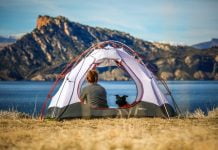It’s key to know how far mice travel in homes to stop them from coming in. House mice are found in many places. They don’t move around too much, which helps in finding ways to control them.
Mice are quick and move around homes a lot. They might only go 10 feet away or as far as 50 feet from their nest. This shows us how mouse movement in homes helps them find what they need. It also lets us guess how far they might go, spreading the problem.
Knowing how much these pests move lets people protect their homes better. Figuring out where mice go is helpful. It tells us where to put traps and what to get rid of. This makes the danger of mice in homes less.
Key Takeaways
- House mice typically restrict their movements to a radius of 10 to 50 feet around their nests.
- Understanding the travel distance of mice is crucial for effective infestation prevention.
- Knowledge of mouse movement patterns assists in the strategic placement of control measures.
- Mice movement can provide insights into the spread and scale of an infestation.
- Removing attractants and blocking entry points based on mice travel patterns can greatly reduce the risk of infestation.
Mice Movement and Nesting Behavior in Residential Areas
The study of mouse nesting habits and mice homing instincts helps us know how seasonal patterns for mouse movement work in houses. It explains their actions in residential places.
Understanding the Intricate Nesting Habits of House Mice
House mice have unique ways of making their nests to survive and have babies. They pick places near walls and never more than 10-25 feet from their center. These spots are chosen for safety, warmth, and nearby food, which is essential for their life and their young.
Homing Instincts and Physical Capabilities of Mice
The mice homing instincts let them know the way in both simple and complex areas. This helps them run away from danger and find a safer place to live when needed.
Seasonal Patterns Affecting Mouse Movement in Homes
Mice move more indoors when it’s cold to find warmth and food. Warmer times, they go outside more for various reasons.
| Season | Nesting Behavior | Observed Movement |
|---|---|---|
| Winter | Indoor nesting increases | Decreased external activity |
| Spring | Mixed indoor/outdoor nesting | Increase in outdoor foraging |
| Summer | Outdoor nests peaking | High external activity |
| Autumn | Preparation for winter begins | Indoor movement rises |
How Far Do Mice Travel
Knowing how far mouse travel distance is key for controlling them in infested places. The mice range changes a lot depending on the type of mouse and its surroundings. Homeowners can use this info to keep mice away more effectively.

Many things affect mice movement, like having enough food and a place to make nests. Let’s look at how far two types of mice usually move:
| Mouse Type | Minimum Travel Distance (feet) | Maximum Travel Distance (feet) |
|---|---|---|
| House Mice | 10 | 50 |
| Field Mice | 2 | 5 |
House mice can travel much farther than field mice, as seen in the numbers above. This tells us they are very good at living in different places. Dealing with them in homes can be tougher. But, if you’re dealing with field mice, it might be easier because they don’t roam far from their home.
The Complex Relationship Between Mice and Their Environment
The link between mice and their environment is very complex. It greatly affects how they act and survive. Since mice are tiny and can adapt, they live according to their surroundings. We can learn a lot by studying this. It helps in making mouse control strategies that work in places where people live.
Mice behavior changes due to many things in their environment. Like, where they find food, where they build their homes, and even the weather. They are good at finding their way and surviving. This makes controlling them a real challenge. We must think about how they sense danger and find food when planning to stop them.
Their world is also affected by predators and people trying to control them. Knowing these facts is key to managing the mouse problem. Making a good plan that includes these things is important. It helps not just in solving the current issues, but also in making the place less inviting for mice. The best way to deal with mice is to have a plan that fits where they live and how they survive.












































